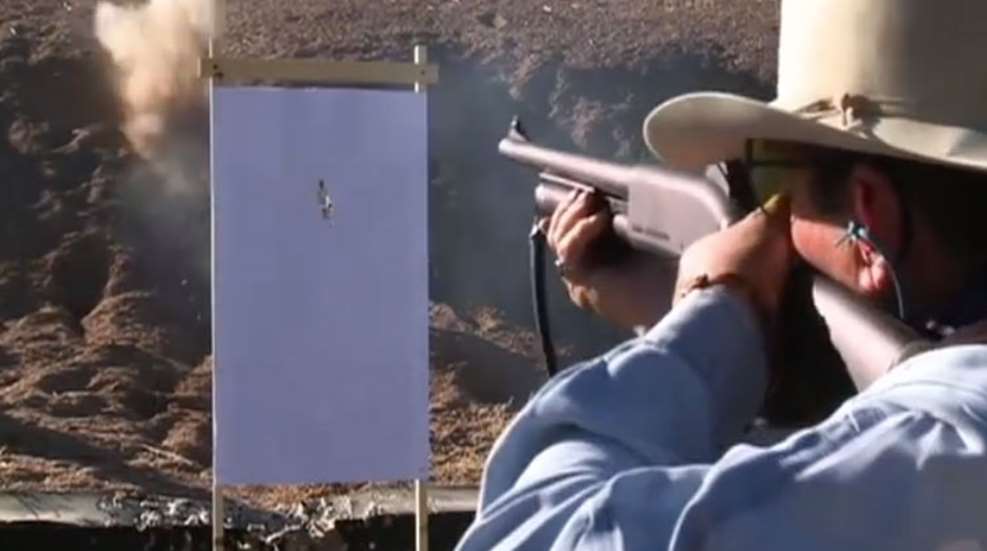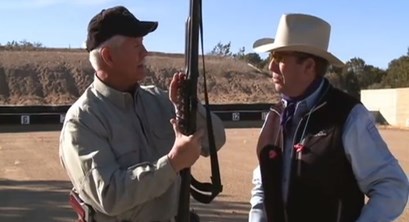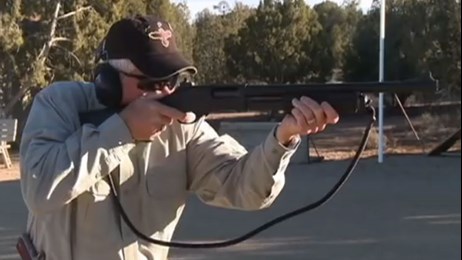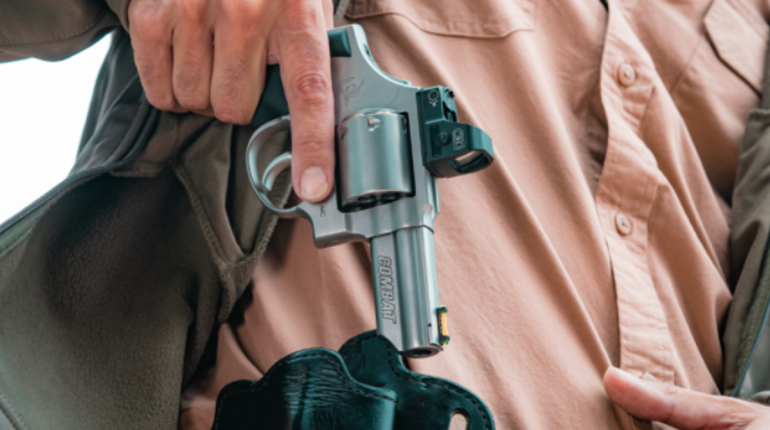
The fighting shotgun has a long and well-deserved history. George Washington urged his men to load their smoothbore muskets, a form of the shotgun, with “buck and ball.” Throughout our frontier history, men and women have protected themselves from dangerous critters, outlaws and other attacks with the trusty shotgun. And it is as useful a defensive tool today as it ever was.
Just about any sort of shotgun will serve well for personal defense. The armed citizen should simply choose the one that he/she handles best. Double-barrel, semi-automatic or pump, a good case can be made for whichever action type a person chooses.

Each available in multiple configurations, the Remington 870 (top) and Mossberg 500 (below) are two of the most popular defensive shotguns.
Compared to other defensive firearms, suitable shotguns are not nearly as expensive. In fact, very useful shotguns can be found on the used market. Nor does one need to go to the extra expense of getting a shotgun that has tactical accessories such as a synthetic stock, light rails or such. One can get very good service out of a used sporting shotgun that has had the barrel shortened to 18 to 20 inches and rifle sights attached. Clearly, some sort of useful shotgun can be found that will fit just about everyone's budget.
One advantage of the shotgun is that it will handle a broad spectrum of ammunition. One can choose birdshot, heavier duck and goose loads, several sizes of buckshot, or slugs. This great variety of ammunition allows the shooter to tailor the shotgun to his personal needs. For example, my “back door” shotgun stays loaded with low-base #6 shot and has taken its share of poisonous snakes and potentially rabid animals that wander into my yard. Another of my shotguns stays loaded with Federal's tactical 00 buckshot for bigger “varmints” that I might have to deal with.
By adding rifle sights—I prefer the ghost-ring sights—the shotgun is also set up to deliver accurate fire with rifled slugs. With a good set of sights and shotgun slugs, the scattergun will deliver surprising accuracy in the vicinity of the 100-yard mark and beyond.
Another useful accessory for the defensive shotgun is a carrying sling. There may be times when it is important to free your hands in a defensive situation. Laying the gun down is rarely a good idea. Slipping it over your shoulder on a sling is much better.
Good sights and a carrying sling are about all the shotgun accessories that a person really needs.
Good sights and a carrying sling are about all the shotgun accessories that a person really needs. When you keep adding stuff to a shotgun, you make an already heavy gun even heavier. Light and handy is what makes most defense guns useful. 
Finally, it is critically important to pattern your individual shotgun with the ammunition that you plan to use. It is amazing how many people think that a shotgun will take care of a threat if it is just pointed in the general direction and fired. Patterning tests will show that shotgun patterns don't spread nearly as fast at gunfight ranges as some folks think. Patterning tests at various ranges will also help the shooter decide just which size and power level of shot is needed for his purposes.
It is very difficult to find documented situations in which a defensive shotgun was fired more than just a few times by an armed citizen. Properly loaded and aimed shotguns tend to stop fights with a good deal of authority. In fact, when the crooks see that the good guy is armed with a scattergun, there may not have to be any shooting at all. Crooks simply do not like to take on well-armed citizens.
The shotgun has been called “the thinking man's defense gun.” If one will give some thought to gun selection, ammo selection, and accessories, he can tailor the shotgun to meet his personal needs. A number of good defensive schools offer shotgun classes that will greatly enhance one's ability to fight with the shotgun, too.
After all these years, the defensive shotgun is still around because it is a proven fight stopper. Battle-proven equipment is always a good thing to have when things go bump in the night.
Additional Reading:
American Rifleman Television: Defensive Shotgun Training




































